Desert X 2023 is a staggering sculpture extravaganza spanning California’s Coachella Valley
Will Jennings travels to the Coachella Valley to explore outdoor sculpture exhibition Desert X 2023, which sees projects balance impact, subtlety, and unapologetic enormity
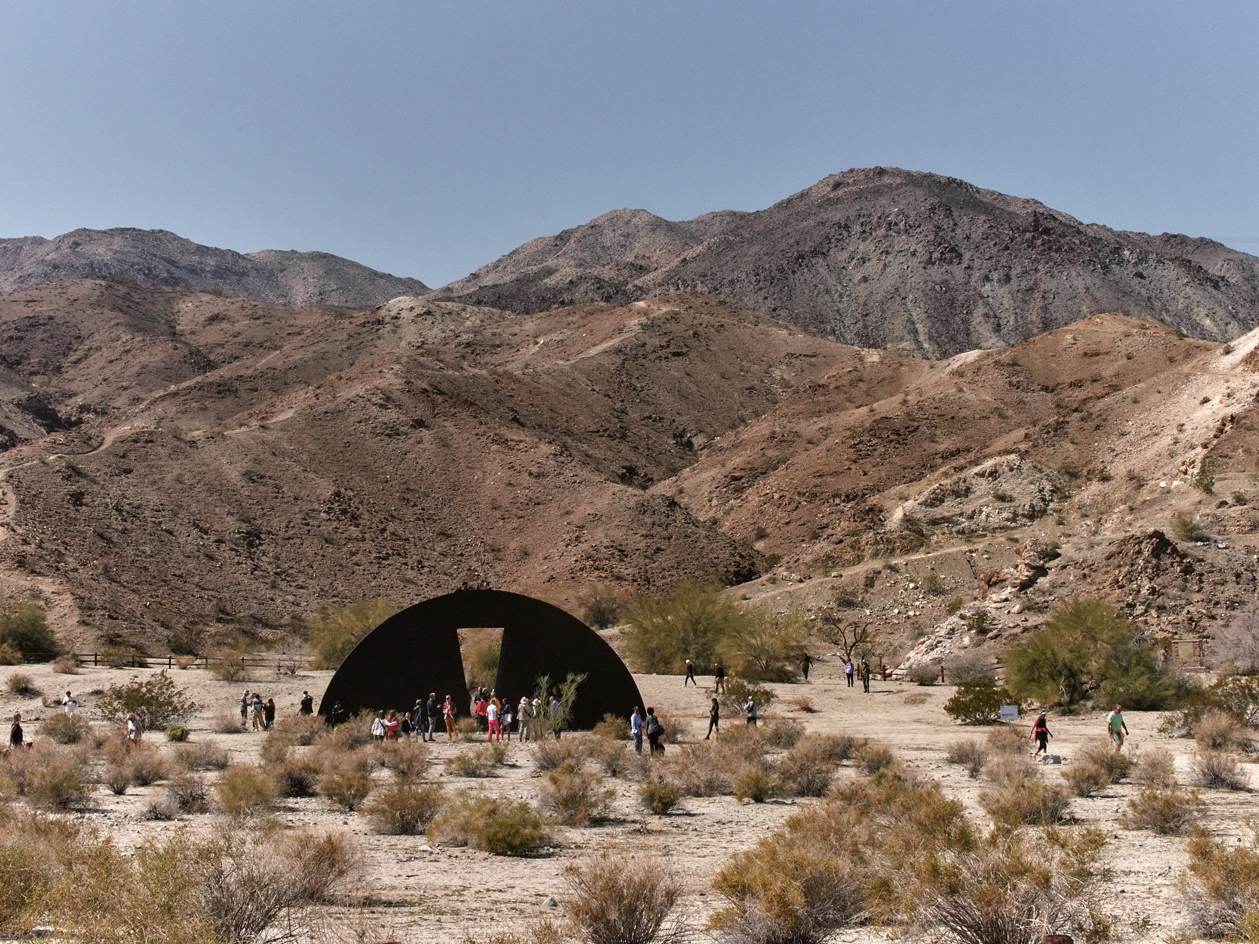
Photography: Carlo Zambon
Deserts are not dead places. Dry and hostile, yes, but teeming with human and non-human lives evolved to not only survive but flourish in such conditions. Deserts are, according to Diana Campbell, co-curator of Desert X 2023, places full of mythologies.
This year’s Desert X, a biennial spread across California’s Coachella Valley, adds to those mythologies but seeks to do so in a way which doesn’t romanticise or patronise. As fellow co-curator and artistic director Neville Wakefield suggests, ‘there’s a First Nation saying that “place is a story happening many times” and I think Desert X is part of that storytelling.’
It is often the case that stories told through large-scale sculpture within photogenic landscapes can become ultra-Instagrammable one-liners in which form and spectacle trumps nuance or narrative. With towering snow-capped mountains, vast dry flats, and fantastical rock formations juxtaposed against man-made turbines, infrastructure, and architecture, exhibiting in the Coachella Valley is no small feat. As Campbell tells Wallpaper*, it might be ‘a challenge for many artists to deal with the harshness and the elegance’ of the Coachella Valley.
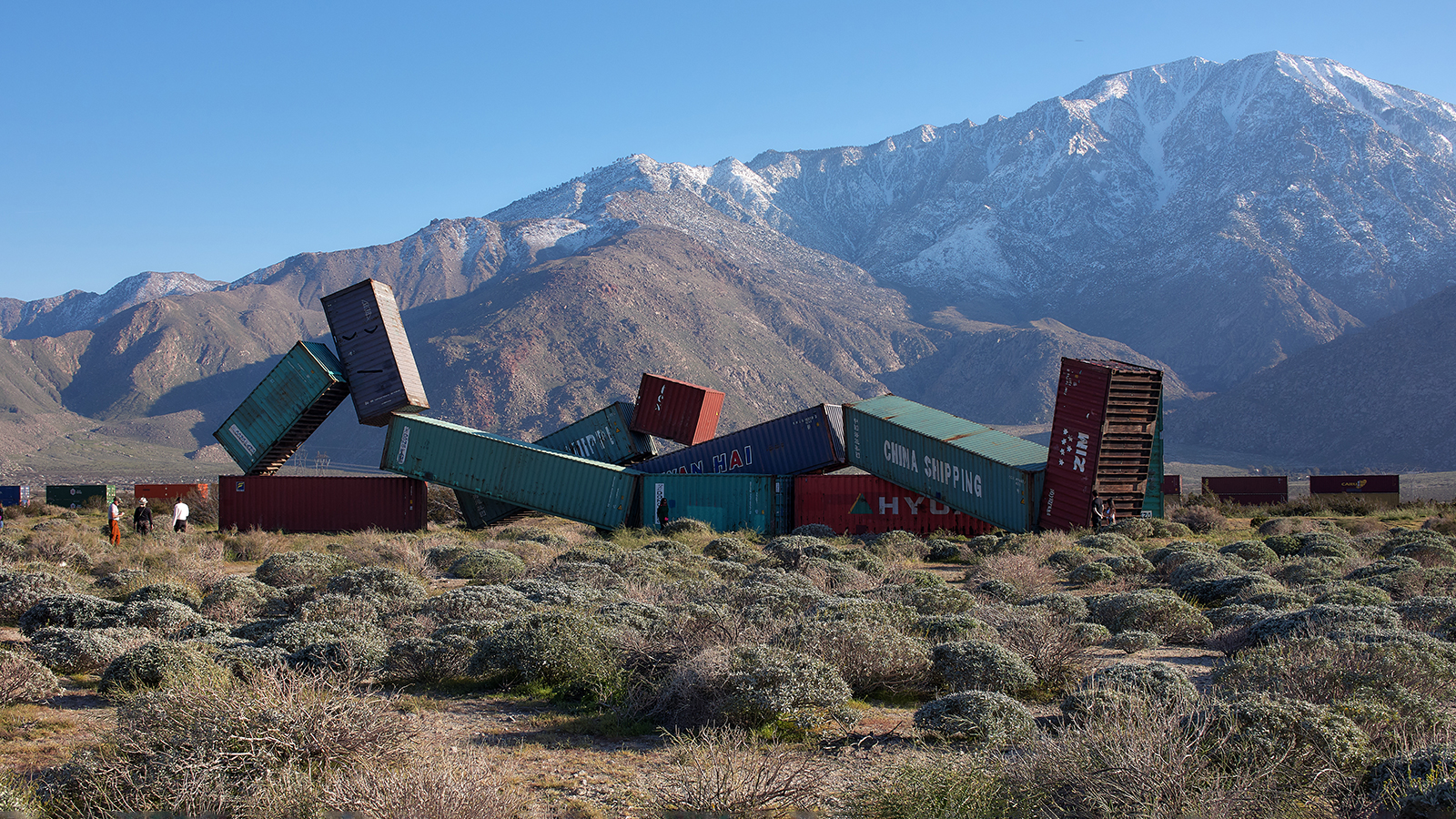
Desert X 2023 installation view, Matt Johnson, Sleeping Figure
However, Desert X 2023 probes deeper than aesthetics and even histories. Loose curatorial themes exploring water/drought, abundance/scarcity, and globalism/interconnectedness are present throughout, but there is no single imposed curatorial line. The projects balance impact and subtlety, though one is unapologetically massive and playful: designed to be seen from traffic along the nearby Interstate 10, Matt Johnson’s Sleeping Figure appears as a chaotic and unlikely amalgamation of shipping containers starkly pronounced in the flat valley.
Conceived in 2021 as global trade routes closed following the Suez Canal blockage, the sculpture also inadvertently speaks to the recent disastrous Ohio train derailment. Sited in proximity to a railway line with regular container trains passing by, Johnson’s ambitious structure arrests an implied movement of an otherwise relentless supply chain into a static form, as if fixed in freefall.
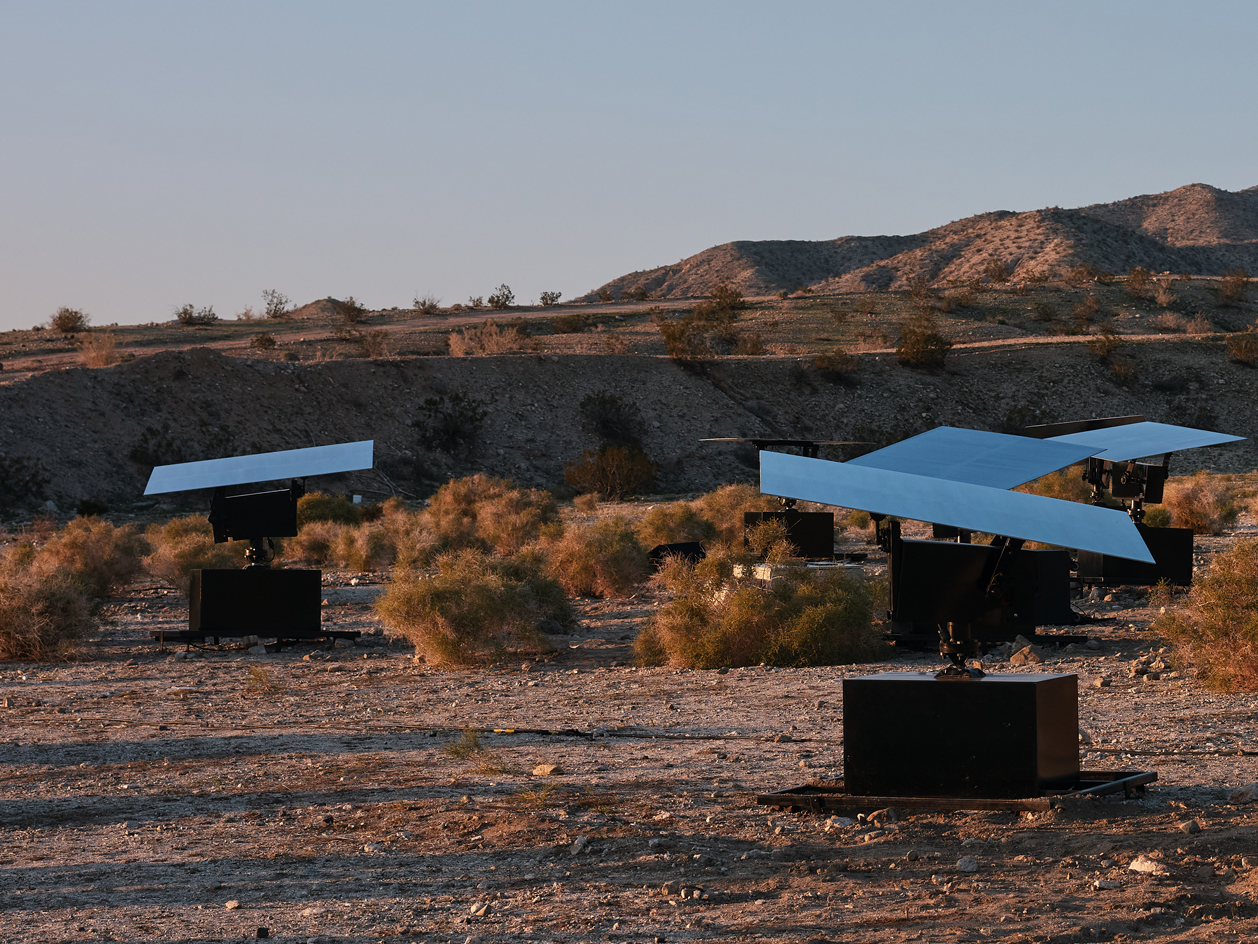
Desert X 2023 installation view, Mario García Torres, Searching for the Sky (WhileMaintaining Equilibrium)
Mario García Torres’s work Searching for the Sky (While Maintaining Equilibrium) disrupts the natural environment through modernist interruption. Riffing on cowboy culture, the artist has harnessed Mechanical Bulls, the fairground machinery that replicates a rodeo bull, replacing the faux-animal with flat metallic squares which flicker in the sharp Californian sun. The geometric panels continuously dance as the sun passes, an anarchic version of Robert Smithson’s Mirror Displacements playfully conflating local pop and natural culture.
Two further sculptures, by Torkwase Dyson and Rana Begum, use colour and geometry within pieces to be experienced as well as gazed at. Dyson’s Liquid A Place, against hills overlooking the City of Palm Desert, is a matt-black graphic interjection. An arch with a wedge cut through, Dyson considers the work in relation to ‘our bodies as bodies of water – the 99 per cent of our bodies that are of water, born in water, and carry a kind of liquidity around it,’ it is a piece inviting bodily exploration – the wedge cut-out not only offering a changeable landscape frame but a threshold for the visitor to cross, while steps lead up and over the arch. What had appeared as dense black can be seen up close as a texture akin to local adobe earthen architectures, a physicality formed of and mirroring surrounding nature.
Receive our daily digest of inspiration, escapism and design stories from around the world direct to your inbox.
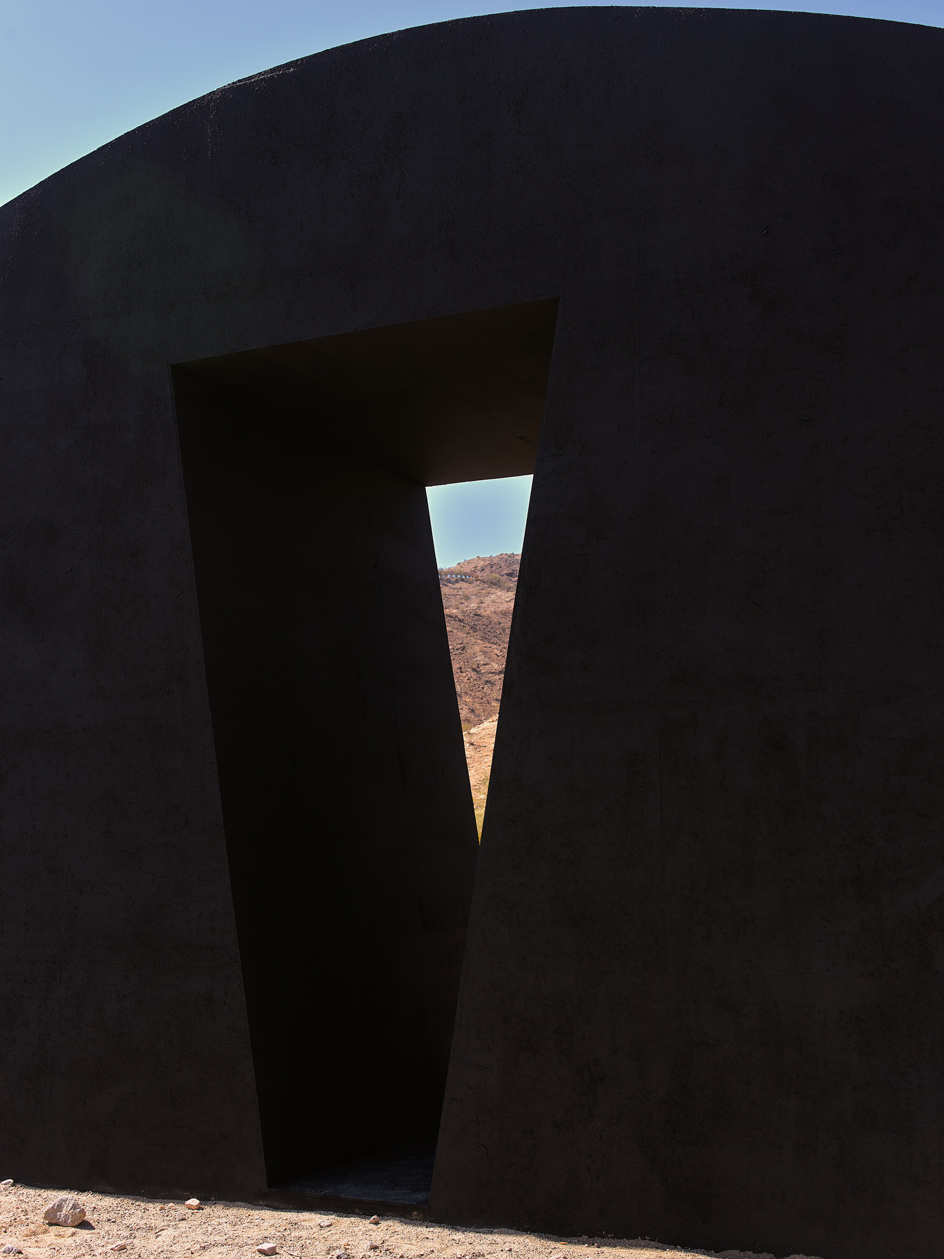
Desert X 2023 installation view, Torkwase Dyson, Liquid A Place
Rana Begum’s No. 1225 Chainlink appears as a joyfully bright yellow mirage within a desert expanse, revealing scale and material only after a long walk from the nearest road. It is formed from off-the-shelf chain-link fencing, calling to mind the US-Mexico border and the violence and division inherent through it. It can also be explored: a series of narrow concentric paths between the mesh gradually become less constricting as the visitor weaves towards the centre, the mesh panels lifted to reveal an open heart.
Begum describes her work as ‘having dual experiences – moments where it is intense, vivid, and loud, and then moments where it’s calm and meditative,’ with the layered yellow mesh forming a solidity, while at other angles – and from within looking out – it feels altogether more uplifting, airy, and less oppressive.
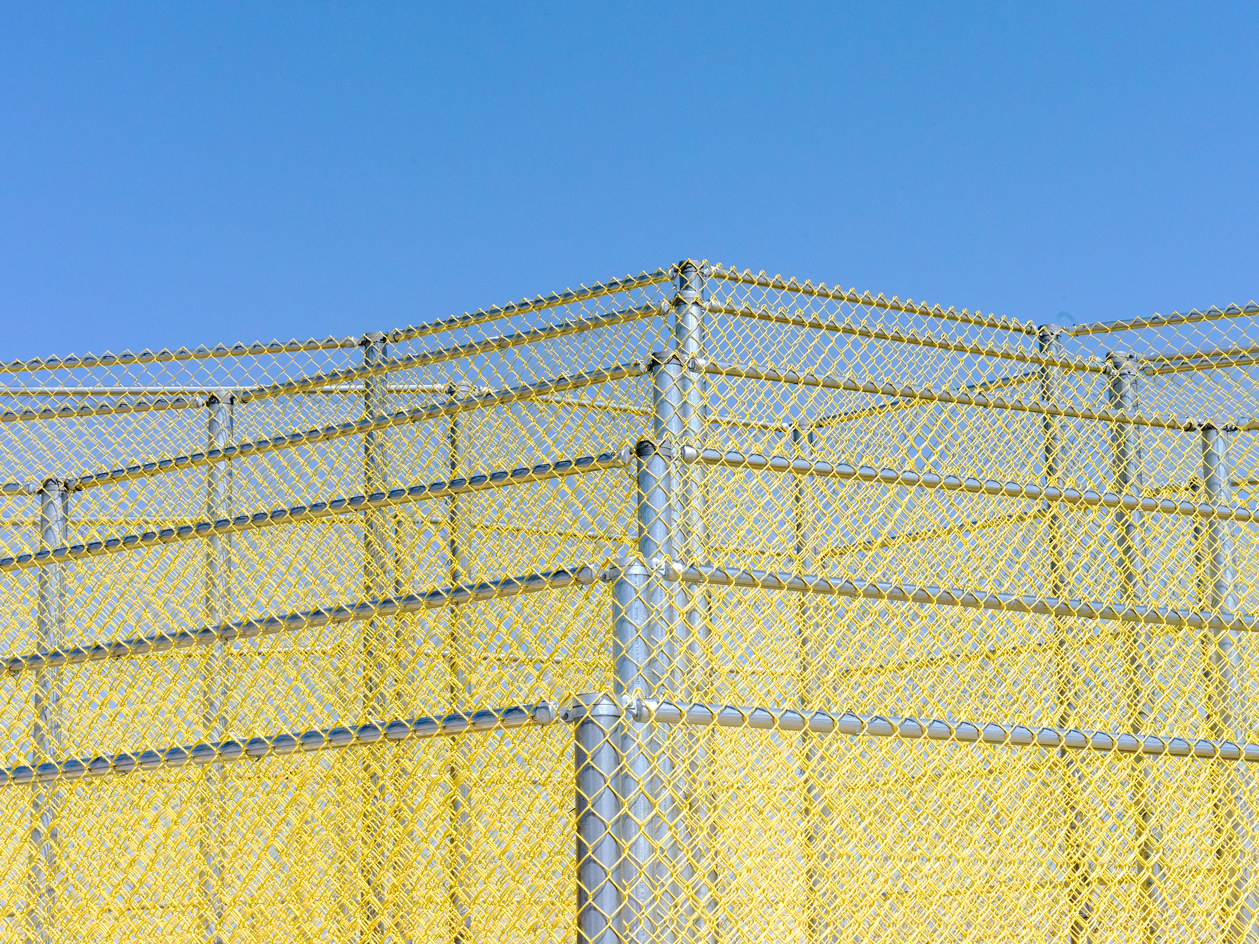
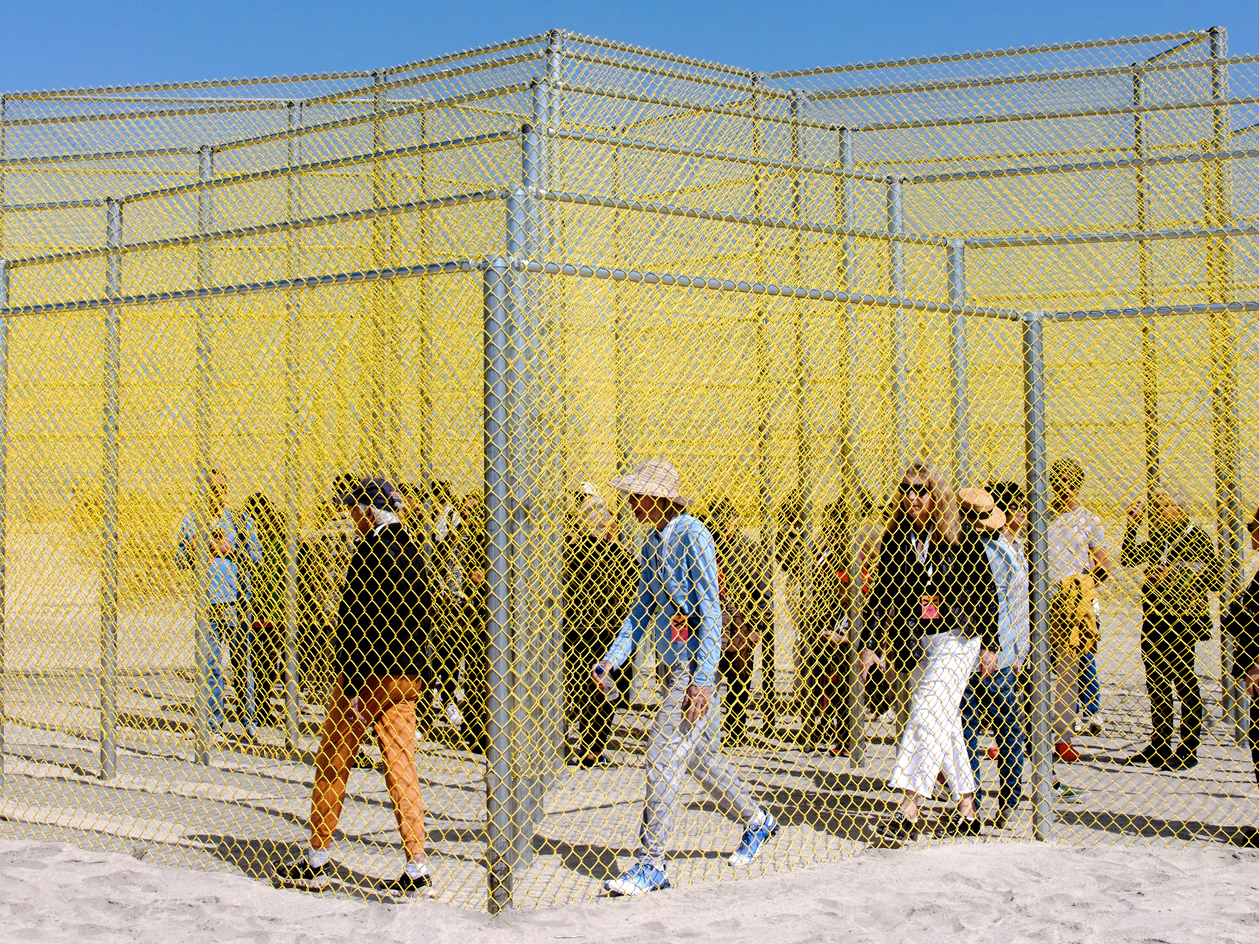
Desert X 2023 installation view, Rana Begum, No.1225 Chainlink
Campbell primarily works in Bangladesh for the Samdani Art Foundation and as chief curator of Dhaka Art Summit (DAS). This year’s DAS, held in February – which also included a work by Begum formed of suspended fishing nets – was titled “বন্যা (Bonna), meaning flood, with Campbell hoping to draw a connection between the two locations. ‘The choices made in Bangladesh will impact California, and the choices made in California will impact Bangladesh,’ she explains of two places at extreme ends of a climate-driven water crisis.
Another creative connection is Bangladeshi architect Marina Tabassum, whose Khudi Bari (Bengali for ‘tiny house’) project similarly appears in both DAS and Desert X. Tabassum’s architecture is focused upon community knowledge and construction and Khudi Bari is a simple lightweight triangulated space-frame design for a home which can be relocated when flash floods threaten chars – small islands within the Bengal delta – and the communities who live on them. 'I believe in the power of our human imaginations to seek appropriate solutions. 'In Bangladesh, communities have always been resilient in the face of changing landscapes, it is part of life here. This is also true of communities throughout the world, especially those who accept uncertainty and adapt instead of resisting and insisting on fixed ideas of the built environment,' says Tabassum. 'This is one of the most important roles of artists, architects and designers – to collaborate and assist in devising solutions that are community-based, and empathetic to the environment.'
A film by Tabassum poetically documenting the construction process of a Khudi Bari is viewable on the Desert X website, though the original intent had been to construct one of the homes in California. Campbell explains that regulations and material costs meant that ‘something that is about $500 per house in Bangladesh would cost $50,000 to show in California as an art object.’ She also notes that ‘It didn't really make sense to put that money into illustrating a low-cost design structure, but her thinking is important for audiences in California so we commissioned the film,’ with Tabussum’s artist fee going towards trucks to support the construction of Khudi Bari homes in Bangladesh. 'I would like to think that based on the philosophy of Khudi Bari, an affordable, adaptable way could be designed and built in the Californian context,' explains Tabassum. 'We recognise there are challenges, but I would also like to think these challenges can be overcome. This is what we refer to as using our ‘context-based imaginations’.
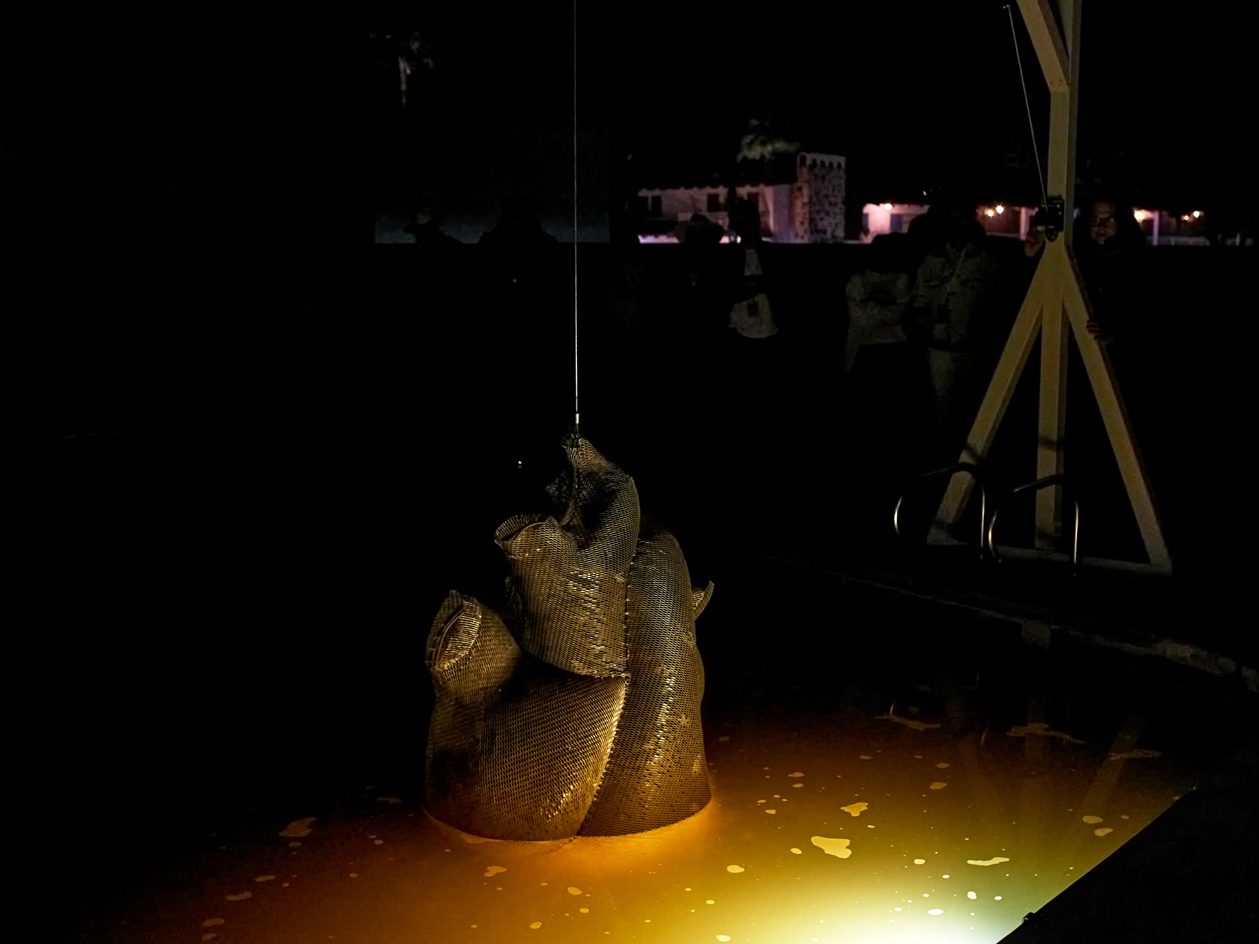
Desert X 2023 installation view, Lauren Bon, The Smallest Sea with the Largest Heart
In contrast to the scale of Begum, Dyson, and Johnson, environmental artist Lauren Bon’s work The Smallest Sea With the Largest Heart is barely visible. The pool of a semi-derelict property in Palm Springs, the city at the centre of Desert X and the ideal location from which to visit all the installations, has been filled with highly saline water from the Salton Sea – a nearby man-made lake and environmental disaster – into which Bon has lowered a steel structure of a blue-whale heart which will, over the course of Desert X, metabolise into solid sculpture whilst creating energy and releasing clean water back into the atmosphere.
Artist duo Hylozoic/Desires, formed of Indian Himali Singh Soin and German David Soun Tappeser, also use a sprinkle of salt in their work Namak Nazar is a single wooden pole supporting seven trumpet-like amplifiers pointing in all directions. The pole appears to have salt growing up it as if sucked from the soil, with approaching visitors invited to press a red button to start a solar-powered sound work – a kind of call-to-prayer which weaves in mythical, folk, biblical, and political stories of salt in a prose poem connecting stories to the desert, and landscapes beyond.
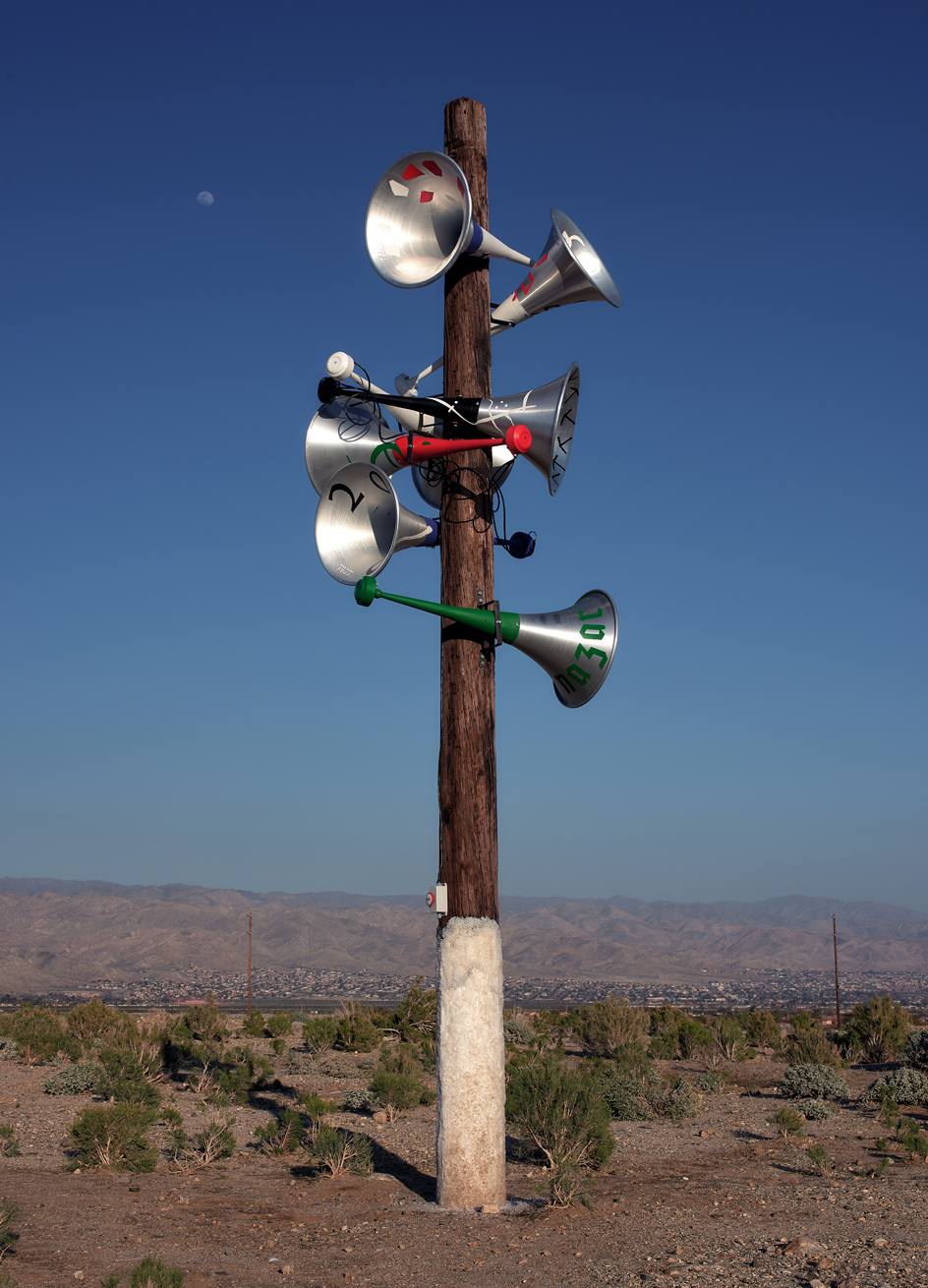
Desert X 2023 installation view, Hylozoic/Desires, Namak Nazar
This speaks to a core ideal of Desert X for Campbell: ‘rather than being defeated by a violent landscape, how do you work with it?’ These works seek to balance extremes and consider how art can shine a light upon place and nature rather than simply sit within it or use it for new narratives.
That said, the desert backdrop is aesthetically sensational, with Desert X being an increasingly important component of Palm Springs’ cultural calendar alongside Modernism Week and Coachella Festival in part because of how it celebrates the valley’s landscapes. In this, its fourth edition, works are spread across a range of sites including the beautiful Sunnylands Center & Gardens, Palm Springs itself as well as other nearby cities. As such, it acts as a creative excuse to explore parts of the valley that otherwise may not be on a visitor’s itinerary. The beauty and curiosity of the environment is only magnified by the works on show, which also provide a lens for Californians to notice and reconsider their landscape – and its history and future – afresh.
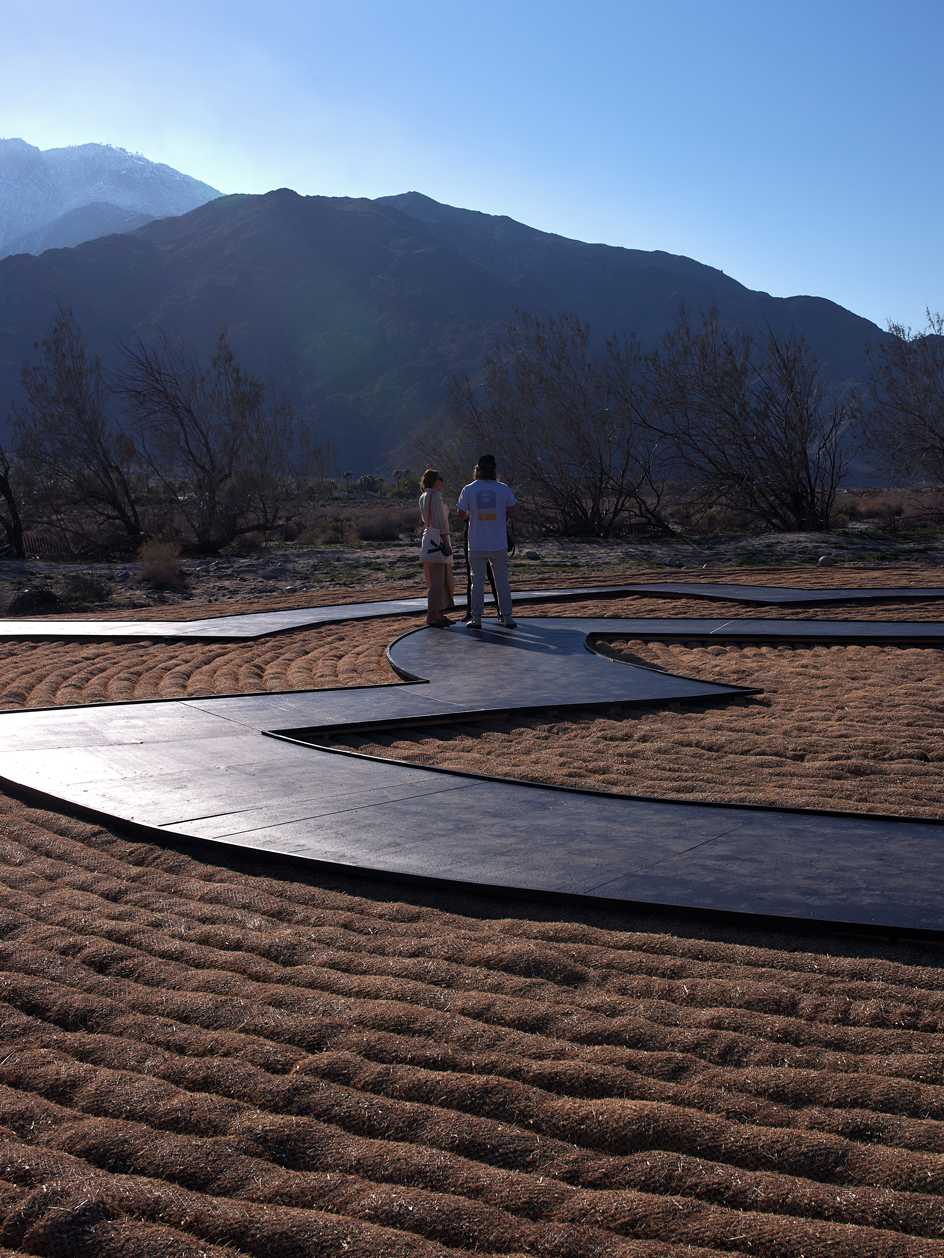
Desert X 2023 installation view, Gerald Clarke, Immersion
Desert X 2023 is on view until May 7 2023. desertx.org; visitgreaterpalmsprings.com
Will Jennings is a writer, educator and artist based in London and is a regular contributor to Wallpaper*. Will is interested in how arts and architectures intersect and is editor of online arts and architecture writing platform recessed.space and director of the charity Hypha Studios, as well as a member of the Association of International Art Critics.
-
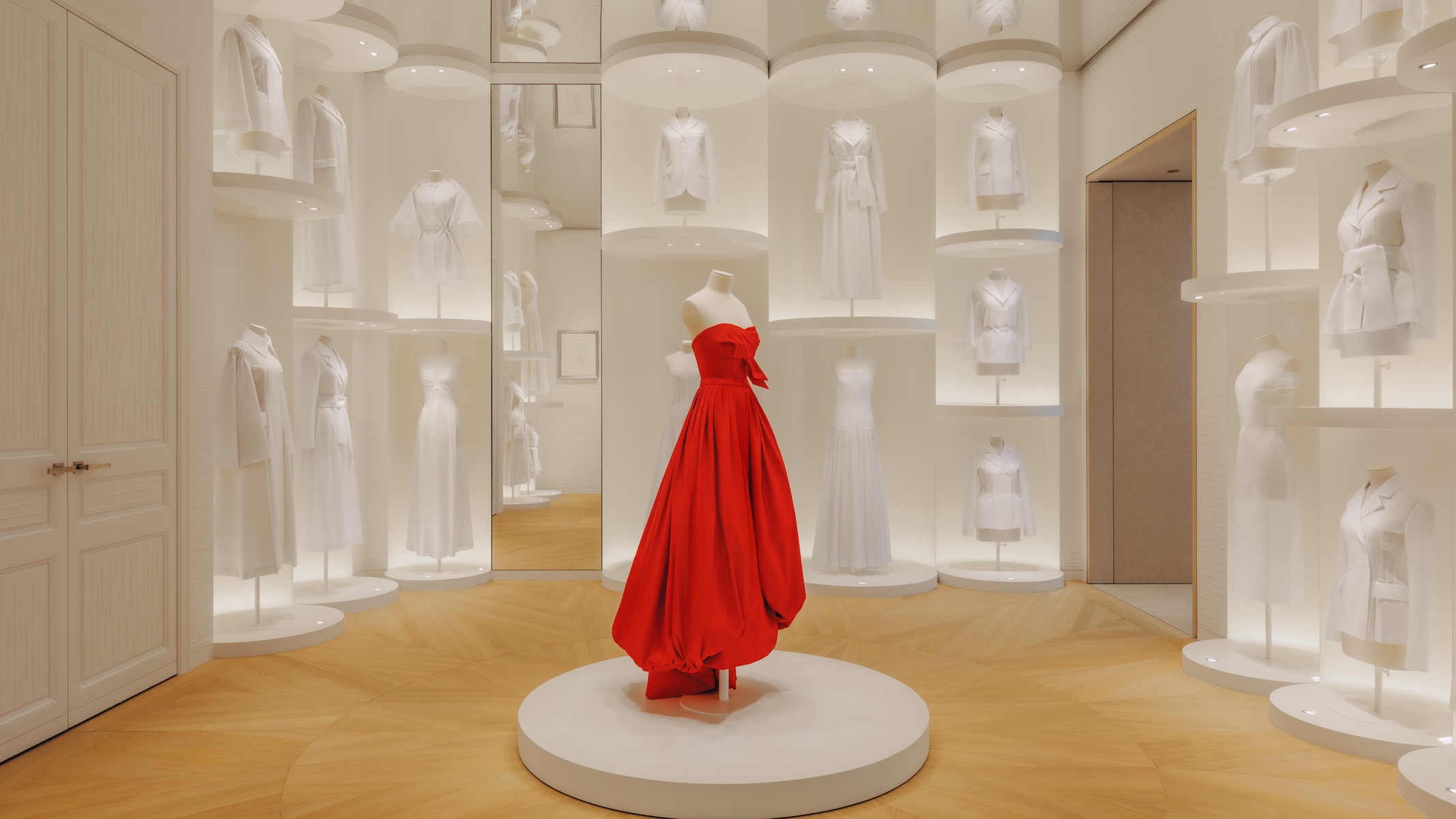 Inside Christian de Portzamparc’s showstopping House of Dior Beijing: ‘sculptural, structural, alive’
Inside Christian de Portzamparc’s showstopping House of Dior Beijing: ‘sculptural, structural, alive’Daven Wu travels to Beijing to discover Dior’s dramatic new store, a vast temple to fashion that translates haute couture into architectural form
-
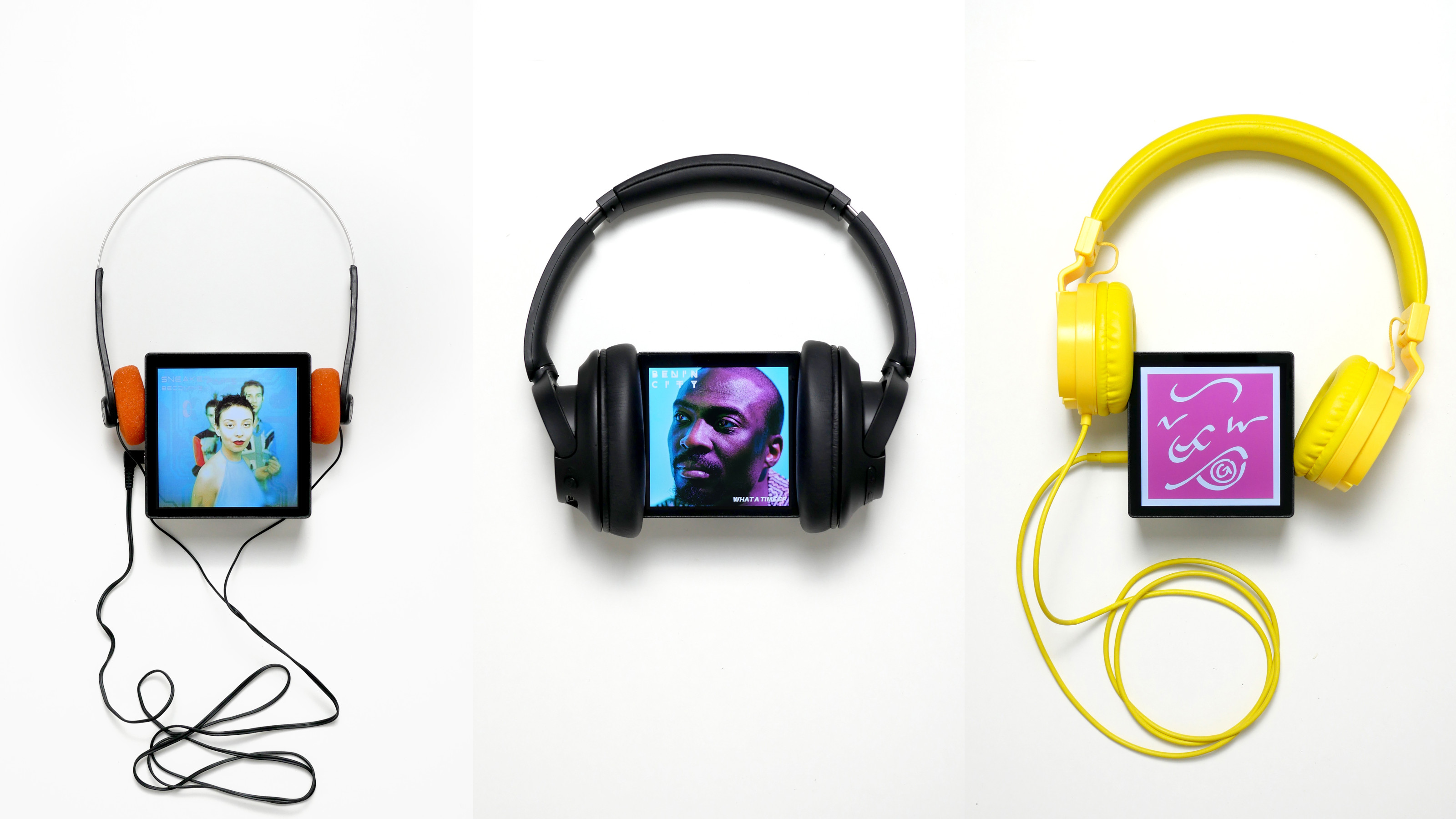 A music player for the mindful, Sleevenote shuns streaming in favour of focused listening
A music player for the mindful, Sleevenote shuns streaming in favour of focused listeningDevised by musician Tom Vek, Sleevenote is a new music player that places artist intent and the lost art of record collecting at the forefront of the experience
-
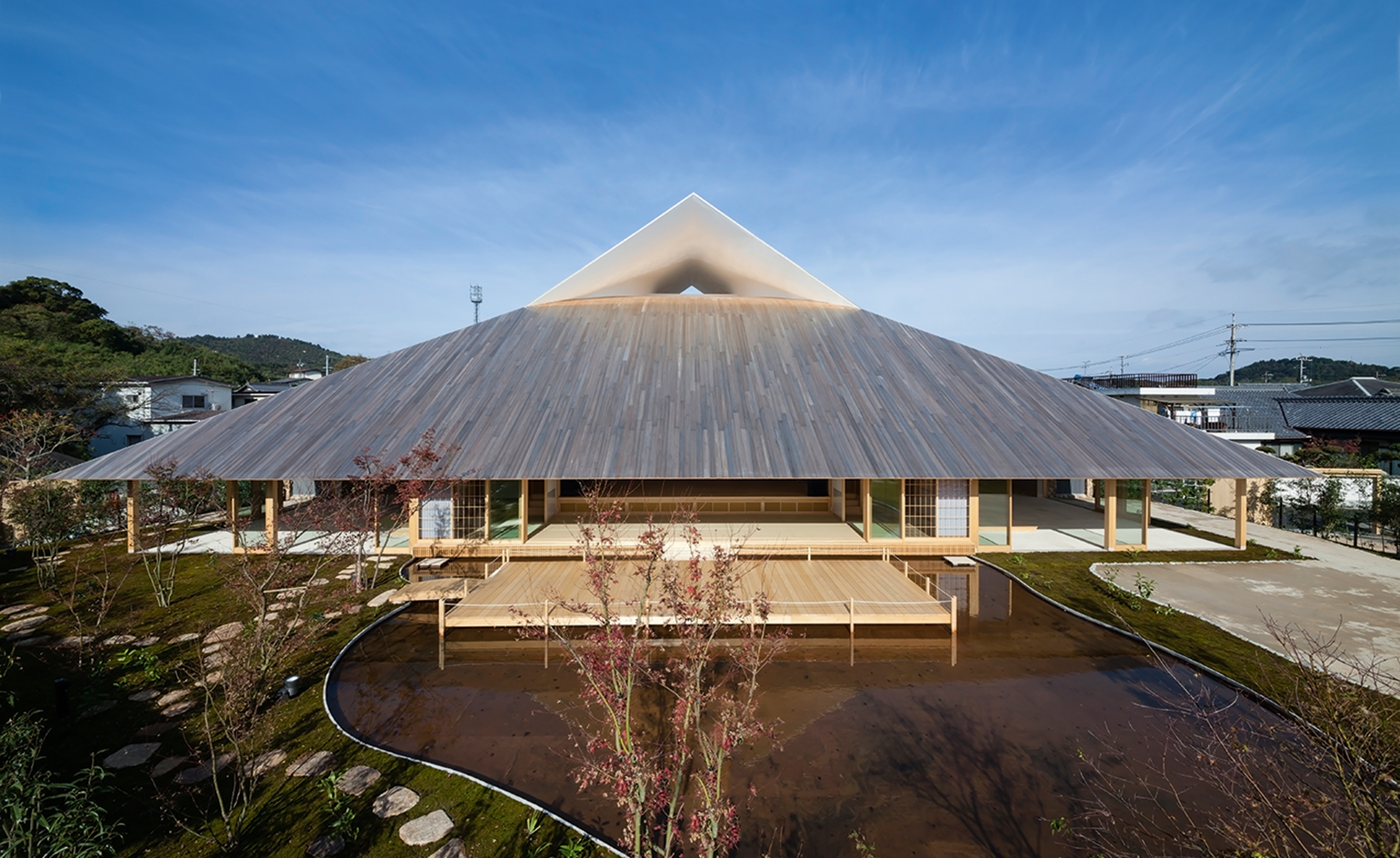 Take a tour of the 'architectural kingdom' of Japan
Take a tour of the 'architectural kingdom' of JapanJapan's Seto Inland Sea offers some of the finest architecture in the country – we tour its rich selection of contemporary buildings by some of the industry's biggest names
-
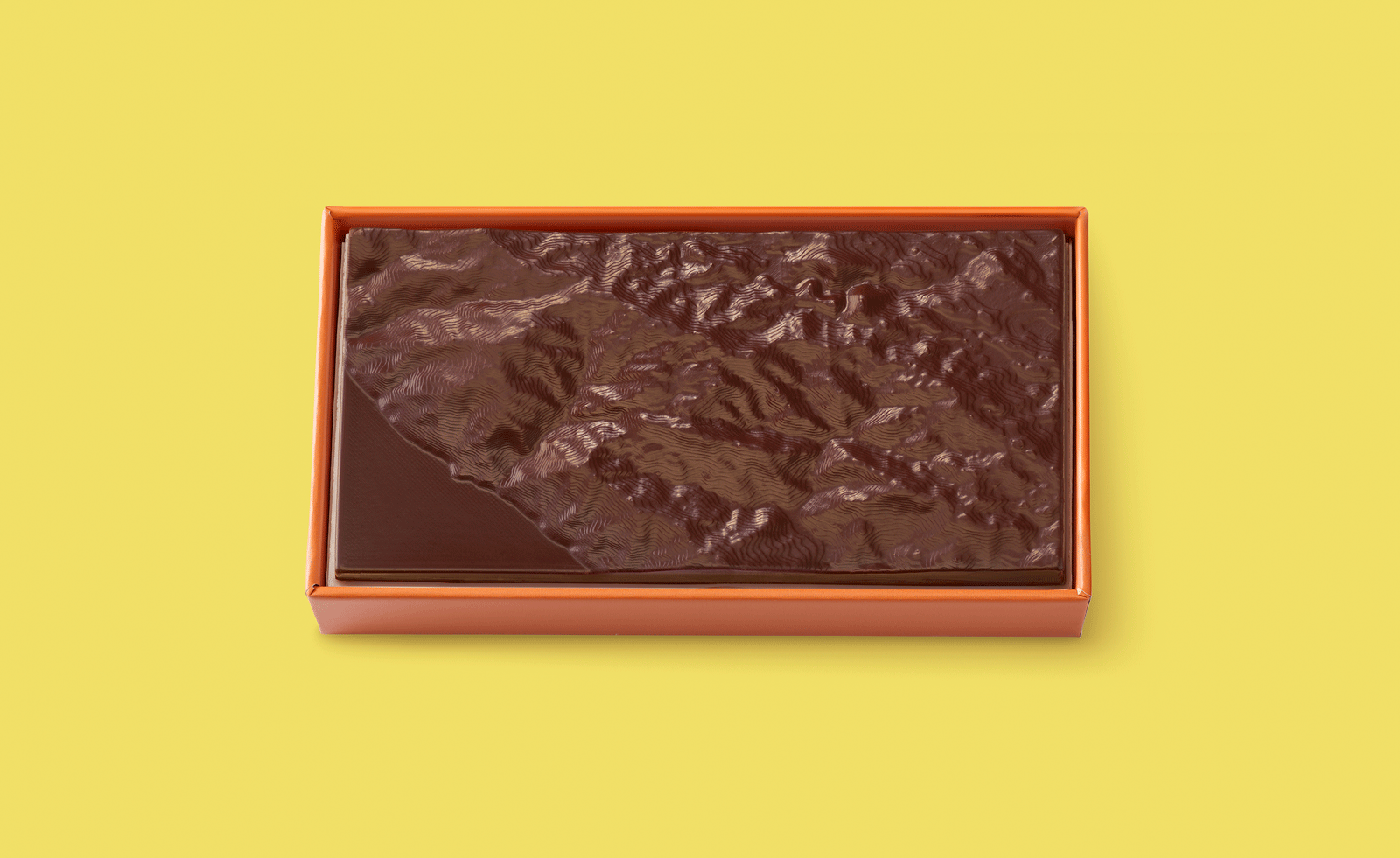 Ed Ruscha’s foray into chocolate is sweet, smart and very American
Ed Ruscha’s foray into chocolate is sweet, smart and very AmericanArt and chocolate combine deliciously in ‘Made in California’, a project from the artist with andSons Chocolatiers
-
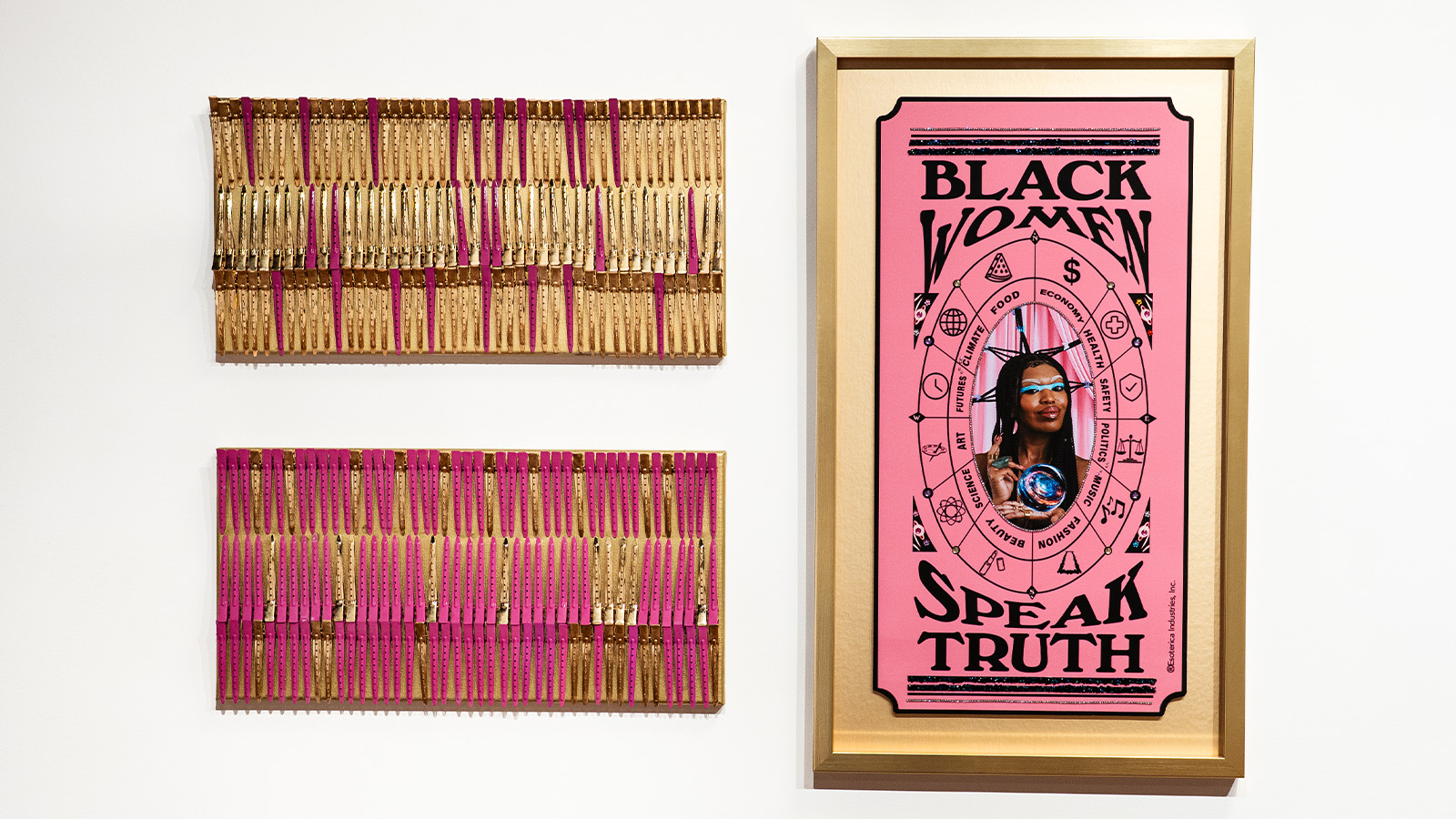 The spread of Butter: the Black-owned art fair where artists see all the profits
The spread of Butter: the Black-owned art fair where artists see all the profitsThe Indianapolis-based art fair is known for bringing Black art to the forefront. As it ventures out of state to make its Los Angeles debut, we speak with founders Mali and Alan Bacon to find out more
-
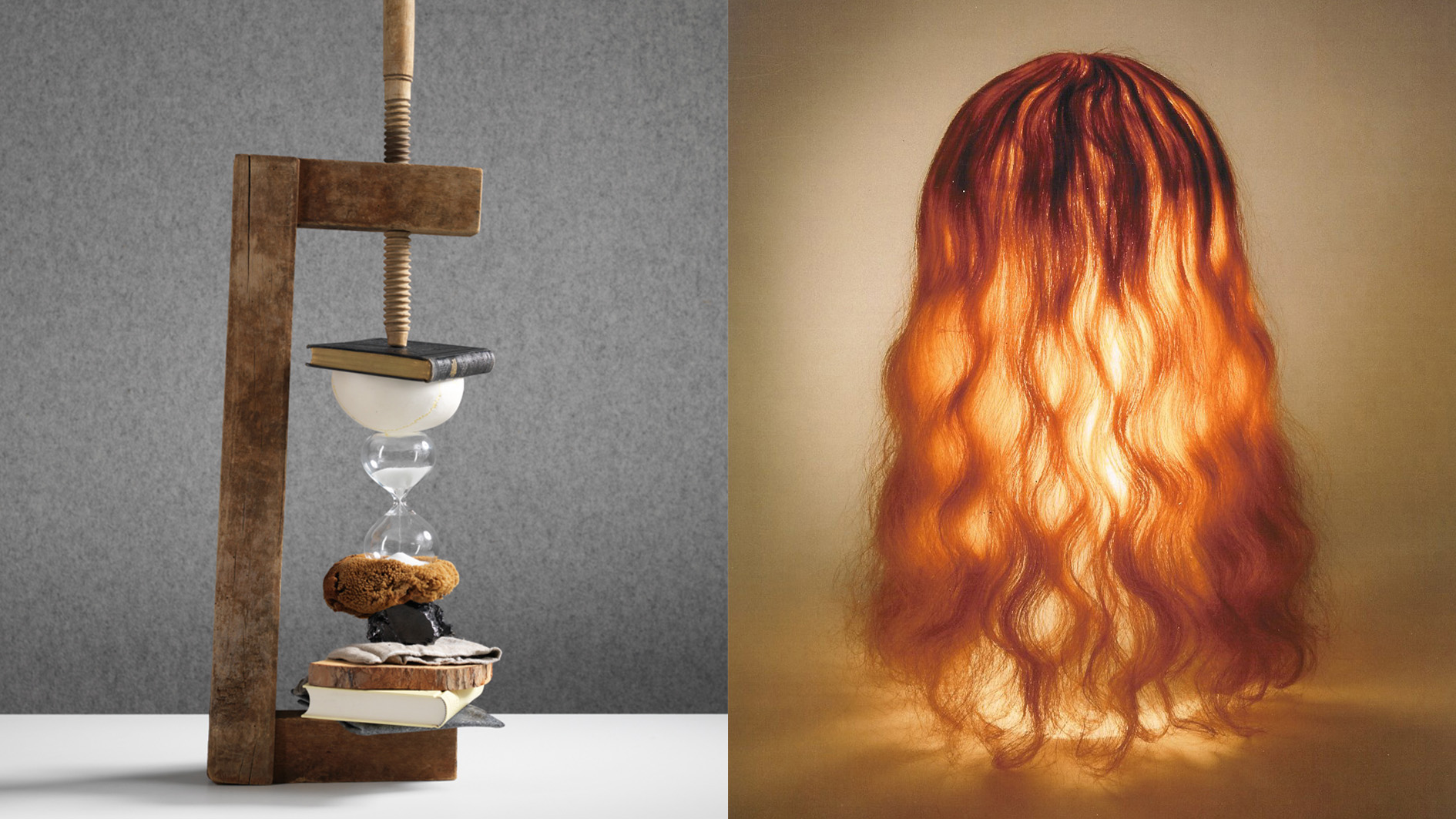 Rolf Sachs’ largest exhibition to date, ‘Be-rühren’, is a playful study of touch
Rolf Sachs’ largest exhibition to date, ‘Be-rühren’, is a playful study of touchA collection of over 150 of Rolf Sachs’ works speaks to his preoccupation with transforming everyday objects to create art that is sensory – both emotionally and physically
-
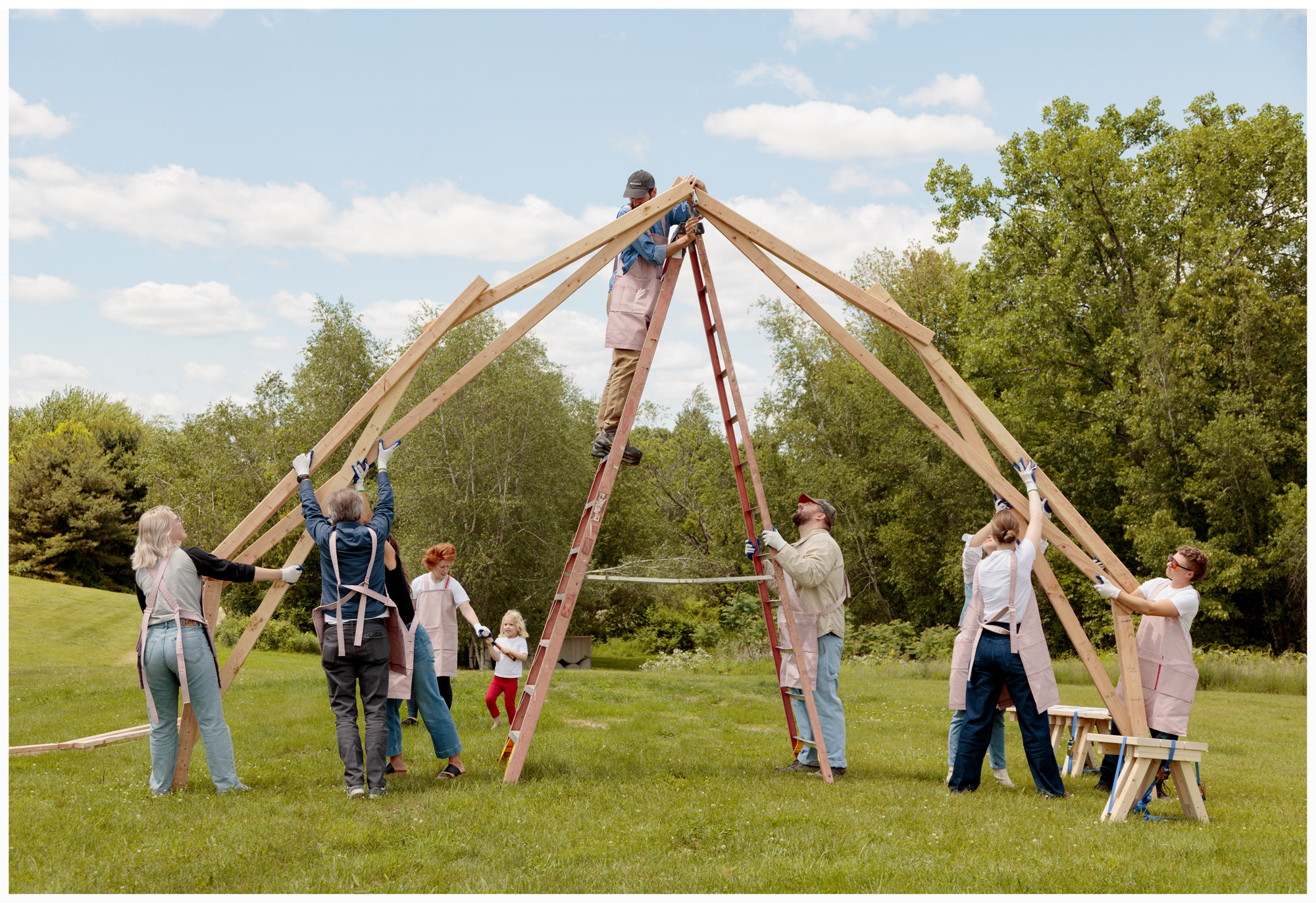 Architect Erin Besler is reframing the American tradition of barn raising
Architect Erin Besler is reframing the American tradition of barn raisingAt Art Omi sculpture and architecture park, NY, Besler turns barn raising into an inclusive project that challenges conventional notions of architecture
-
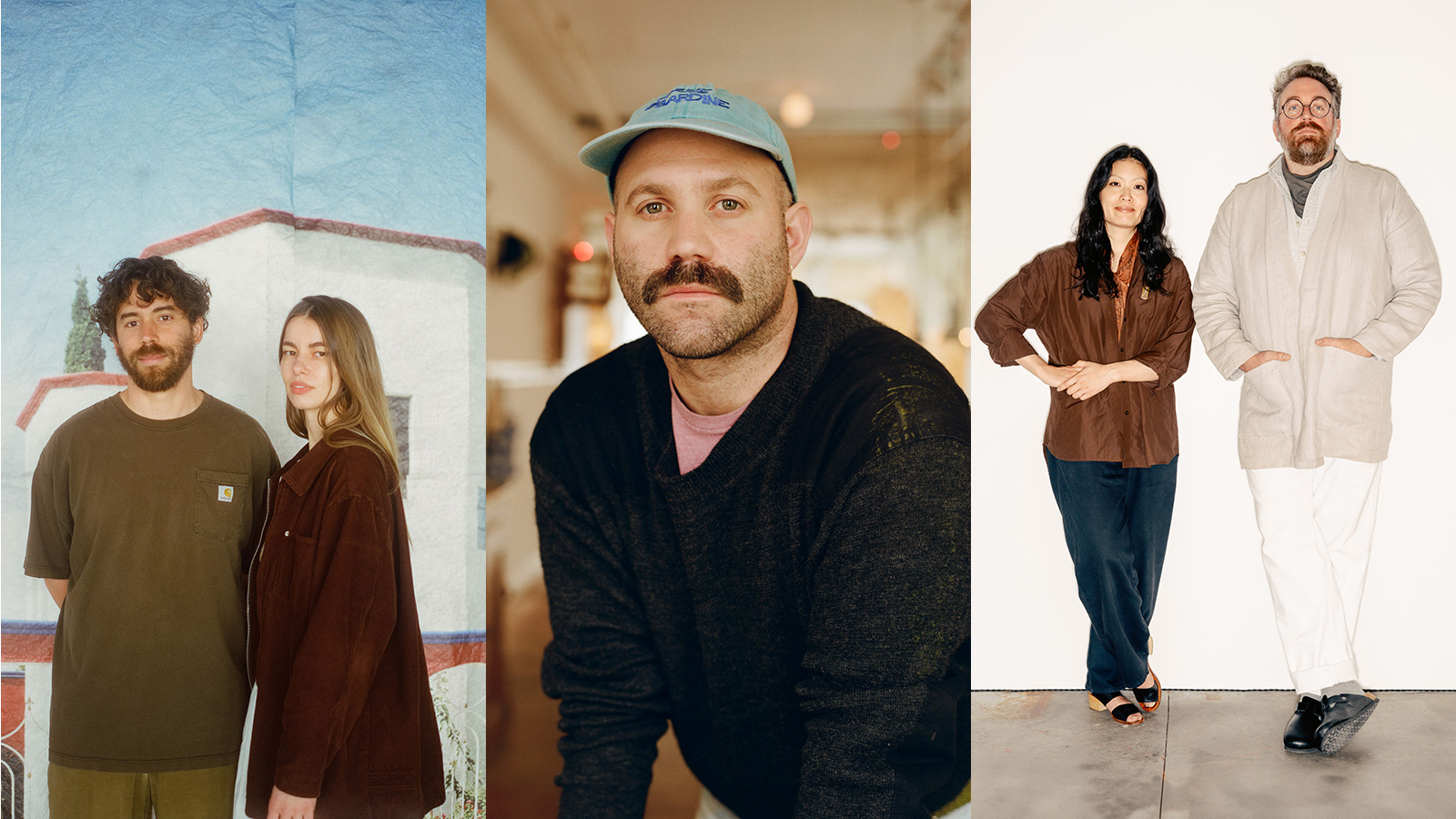 The dynamic young gallerists reinvigorating America's art scene
The dynamic young gallerists reinvigorating America's art scene'Hugging has replaced air kissing' in this new wave of galleries with craft and community at their core
-
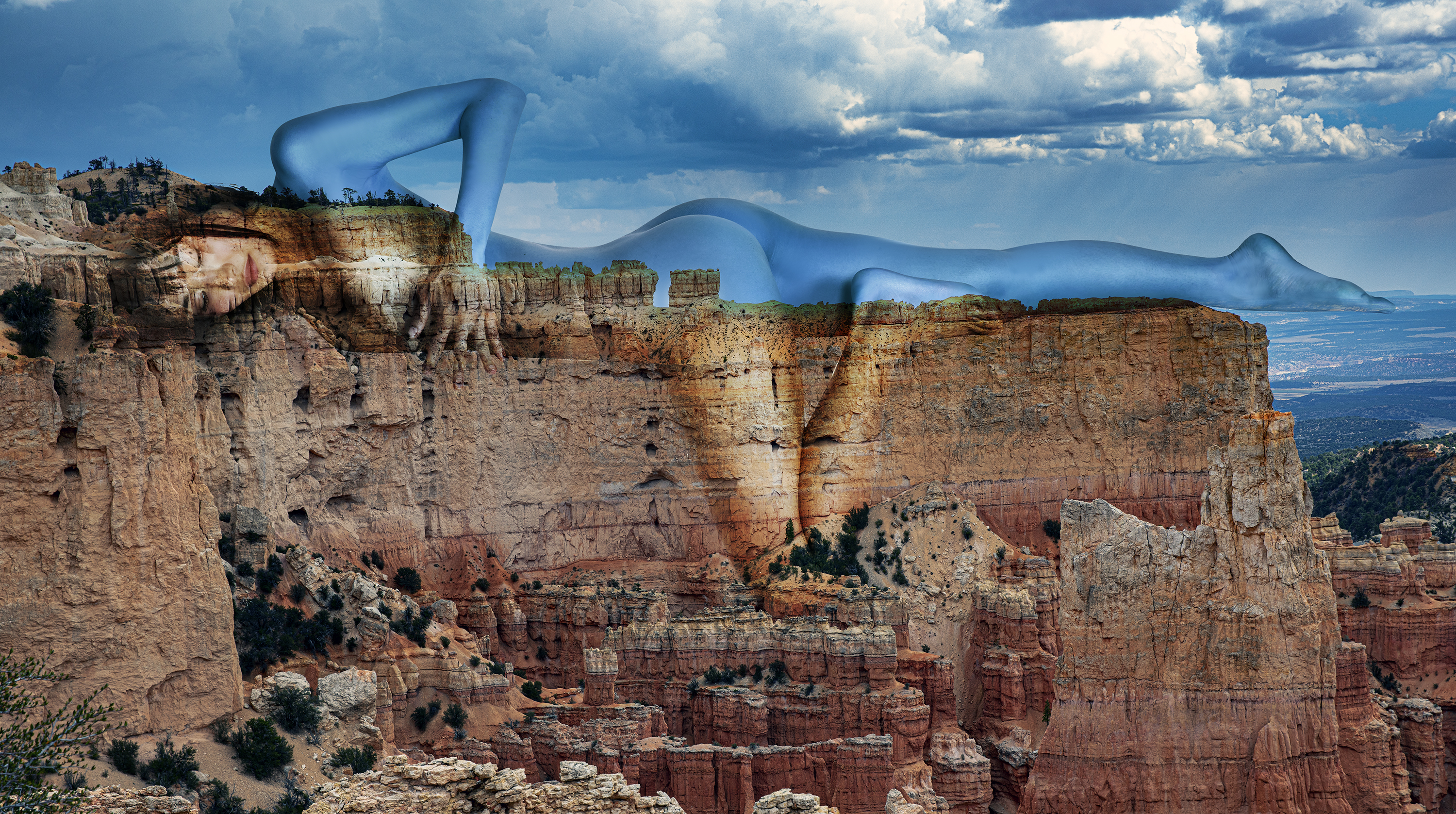 Mystic, feminine and erotic: the power of Penny Slinger’s bodies as landscape
Mystic, feminine and erotic: the power of Penny Slinger’s bodies as landscapeArtist Penny Slinger continues her exploration of the sacred, surreal feminine in a Santa Monica exhibition, ‘Meeting at the Horizon’
-
 What is recycling good for, asks Mika Rottenberg at Hauser & Wirth Menorca
What is recycling good for, asks Mika Rottenberg at Hauser & Wirth MenorcaUS-based artist Mika Rottenberg rethinks the possibilities of rubbish in a colourful exhibition, spanning films, drawings and eerily anthropomorphic lamps
-
 San Francisco’s controversial monument, the Vaillancourt Fountain, could be facing demolition
San Francisco’s controversial monument, the Vaillancourt Fountain, could be facing demolitionThe brutalist fountain is conspicuously absent from renders showing a redeveloped Embarcadero Plaza and people are unhappy about it, including the structure’s 95-year-old designer